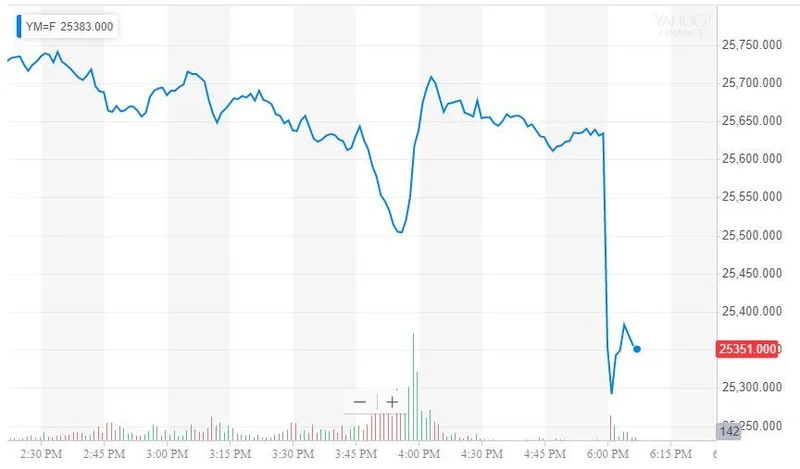Article Directory
This Market Is Rallying on a Statistical Illusion
The numbers, on their face, are intoxicating. The Dow Jones Industrial Average just crested 47,000, a level that would have sounded like science fiction a few years ago. The S&P 500 has surged 36% in a little over six months, closing above 6,800 for the first time. By all conventional metrics, this is a roaring bull market, one that has defied geopolitical friction, trade-war rhetoric, and lingering economic anxieties.
The prevailing narrative is straightforward and seductive. Corporate America is delivering, with about 86% of reporting S&P 500 companies beating third-quarter earnings expectations. The Federal Reserve, armed with cooler-than-expected inflation data, appears ready to pivot, with markets pricing in a 96.7% probability of an interest rate cut this week. Add a heavy dose of AI-fueled optimism and a potential trade détente between the US and China, and you have the perfect cocktail for a year-end rally. Analysts are tripping over themselves to declare that this momentum has legs, with some arguing that if you Think the stock rally is over? It may just be beginning, driven by what Sam Stovall of CFRA Research aptly calls "FOMO fumes."
But as the ticker tape flashes green and the headlines scream new records, my analysis keeps circling back to a series of troubling discrepancies buried beneath the surface. The market seems to be celebrating a victory based on a set of data that, when scrutinized, looks increasingly fragile and perhaps even misleading. We are cheering for a game where the scoreboard might not reflect the reality on the field.
The Disconnect Between Wall Street and Main Street
The entire bull case hinges on two core assumptions: inflation is under control, paving the way for Fed easing, and the consumer remains resilient enough to keep corporate profits buoyant. A closer look at the underlying data suggests both of these assumptions are on shaky ground.
The official inflation numbers, which have given the Fed its green light, are being openly questioned by astute analysts. Bob Elliott of Unlimited Funds points out that President Trump’s tariff campaign is creating a "surge in tariff related price hikes," effectively keeping inflation stuck above 3% for tangible goods. This pressure is negating any relief from disinflation in other sectors, like rent, creating a painful squeeze on household budgets.

The critique from Charlie Bilello at Creative Planning is even more damning. He calls the government's calculation for health insurance inflation "absurd" and "clearly wrong." I've looked at hundreds of these government data series, and the disconnect Bilello highlights between the CPI's health insurance component and the KFF's real-world premium data is one of the most glaring I've ever encountered. The government statistic claims health insurance prices have fallen 18% over the last five years. The reality? KFF data shows a 26% increase over the same period. This isn't a rounding error; it's a fundamentally different economic reality for millions of Americans.
When the official data claims costs are falling while families see their premiums soar, who are you going to believe? This statistical illusion of cooling inflation masks a persistent drain on consumer purchasing power. It helps explain the other warning signs we’re seeing: a weakening labor market and reports of borrowers falling behind on auto loan payments. The consumer isn't as healthy as the headline earnings beats would suggest.
This brings us to the market's other pillar: corporate earnings. While the 86% beat rate is impressive, we must ask where that strength is coming from. The Magnificent Seven tech stocks have accounted for roughly 40%—to be more exact, 41%—of the S&P 500's total gains this year. This isn't a broad-based, healthy advance; it's a highly concentrated surge led by a handful of mega-cap companies riding the AI wave.
We saw a preview of this fragility when Tesla reported earnings on October 22 and missed analyst estimates. The stock has been punished for it. With Microsoft, Alphabet, Meta, Apple, and Amazon all reporting this week, the market's concentration risk is about to be put to the ultimate test. As Lisa Shalett at Morgan Stanley Wealth Management warns, "we are not convinced that the rising tide will sufficiently lift all boats." The market's advance is like a magnificent skyscraper built on an increasingly narrow foundation. What happens if one of its main pillars buckles?
The Great Disconnect
The current market isn't just running on adrenaline and FOMO. It's running on a belief in a set of economic data that is being credibly challenged. The rally is a monument to a narrative of immaculate disinflation and consumer strength that feels more like a statistical artifact than a reflection of the real economy. While investors celebrate the prospect of Fed cuts—a monetary solution—the underlying problem may be a fiscal and structural one, driven by trade policy and systemic costs that official data fails to capture. The risk here isn't a simple correction. It's the moment the market is forced to reconcile its optimistic narrative with a much harsher, and more expensive, reality.
